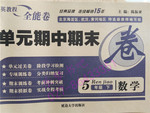题目内容
2.Tang Xianzu and William Shakespeare were contemporaries (同代人),who coincidentally died in the same year.Japanese scholar Aoki Masarut was the first to draw a link between the two in his 1943book A History of Chinese Literary Thought.Yet,dying in the same year,1616,is not reason enough to put them together.
Scholars who specialize either in Tang or Shakespeare are looking for similarities between the two as the anniversaries (周年) of their deaths are marked in the United Kingdom,China and around the globe.
"Tang Xianzu was not China's Shakespeare,"said Chen Guohua,a professor at Beijing Foreign Studies University,striking a rare discordant(不和谐的) note."He was just China's Tang Xianzu.Nobody in the English-speaking world can hold a candle to Shakespeare,and Tang was just one of the greats of Chinese drama.Guan Hanqing and Wang Shifu were equally skillful."
Both Tang's and Shakespeare's plays were meant for the stage,but they served different audiences.Shakespeare was a professional dramatist while Tang was a civil servant who happened to pen a few plays and thousands of poems.Tang's lines were sung mostly at family theaters at a time when noblemen and retired officials were patrons (赞助人) of the arts who owned and ran their own entertainment troupes.Shakespeare,the English Bard (吟游诗人) had to sell tickets to whoever would buy them.
That probably affected their writing styles.While Tang's language is extremely difficult and the rhymes (韵律) come on like hurricanes,it is a wonder that Shakespeare's vast vocabulary could be understood by those in the Globe Theatre back then.And given that the Bard's subject matter runs such a wide range,most people,whatever their tastes,could take away something.
Though no one can touch the Bard in range and richness,there is one area where Tang shines,and that is in the use of dreams,not only as a plot device but also a philosophical tool.His quartet of plays (四梦) all built on dreams,often indicating that life is empty and all the demand for power eventually amounts to nothing.
In The Peony Pavilion (牡丹亭),his most famous play,Tang raised the dream to a higher level that Sigmund Freud would have recognized.It is the subconscious (潜意识) world of the major characters,especially Du Liniang,the noble young lady who whiles away her youth in a gilded cage.It is not a traditional love story because she had not seen or known the young man.
Of all Shakespeare's works,the dream features in A Midsummer Night's Dream.The forest near Athens is similar to the family garden in The Peony Pavilion,a neighboring quarter that sets free the desires of the young.
For the ending,Pavilion brings sadness that is absent from Shakespeare's Dream.But lyricism and earthy humor are present in both plays.And both tales can be sung or danced because they lend themselves to other forms of performing arts.Pavilion,intended as an opera,has also been chaned into plays but has been less successful.
They both represent peaks in culture,but we should stop from measuring which peak is higher and focus on what's unique about each of them instead.And the comparison of Tang and Shakespeare can serve as a point of departure for meaningful conversations about art,literature and cultural inspirations,rather than being an end in itself.
65.What can we learn from the first three paragraphs?C
A.Tang and Shakespeare died for the same reason.
B.Tang and Shakespeare were born in the same year.
C.The four hundredth anniversary of their deaths is in 2016.
D.Scholars first put Tang and Shakespeare together in 1616.
66.What Chen Guohua said suggests thatA.
A.Tang was no match for Shakespeare in plays
B.Tang was more famous than Shakespeare in China
C.Guan Hanqing and Wang Shifu were greater than Tang
D.Shakespeare was only famous in the English-speaking countries
67.Tang and Shakespeare served different audiences becauseD.
A.their plays were meant for the stage
B.they were in different countries
C.the prices of the tickets were different
D.they had different cultural backgrounds and status
68.According to the passage,which of the following is Tang's writing style?B
A.His language is easy to understand.
B.His plays are full of philosophy.
C.His plays have a wide range of themes.
D.The vocabulary in his plays is vast.
69.What can we learn about The Peony Pavilion and A Midsummer Night's Dream?C
A.They were both intended as operas.
B.They got the same success as plays.
C.The forest and the family garden played the same role.
D.Sadness was present in A Midsummer Night's Dream.
70.By writing the passage,the writer mainlyD.
A.compares Tang's life with Shakespeare's
B.introduces the works of Tang and Shakespeare
C.calls on people to read the works of Tang and Shakespeare
D.draws readers'attention to the features of Tang and Shakespeare.
分析 本文属于说明文阅读,作者通过这篇文章主要向我们描述了汤显祖和威廉•莎士比亚这两个同时代的人的作品和特点,目的是引起读者注意唐和莎士比亚的特点.
解答 65.C.细节理解题.根据第二段"Yet,dying in the same year,1616,is not reason enough to put them together"可知2016年是他们死亡400周年;故选C.
66.A.细节理解题.根据第四段"He was just China's Tang Xianzu.Nobody in the English-speaking world can hold a candle to Shakespeare"可知Tang在戏剧中不是莎士比亚的对手;故选A.
67.D.推理判断题.根据第五段"Shakespeare was a professional dramatist while Tang was a civil servant who happened to pen a few plays and thousands of poems"可知唐和莎士比亚为不同的观众服务因为他们有着不同的文化背景和现状;故选D.
68.B.细节理解题.根据文章第七段"there is one area where Tang shines,and that is in the use of dreams,not only as a plot device but also a philosophical tool"可知他的剧本充满哲理;故选B.
69.C.细节理解题.根据倒数第三段"The forest near Athens is similar to the family garden in The Peony Pavilion,a neighboring quarter that sets free the desires of the young"可知牡丹亭和仲夏夜之梦中森林和家庭花园扮演同样的角色;故选C.
70.D.主旨大意题.通读全文,可知文章主要介绍了汤显祖和威廉•莎士比亚这两个同时代的人的作品和特点,目的是引起读者注意唐和莎士比亚的特点;故选D.
点评 考察学生的细节理解和推理判断能力,做细节理解题时一定要找到文章中的原句,和题干进行比较,再做出正确的选择.在做推理判断题不要以个人的主观想象代替文章的事实,要根据文章事实进行合乎逻辑的推理判断.

 单元期中期末卷系列答案
单元期中期末卷系列答案| A. | missed | B. | to miss | C. | missing | D. | miss |
| A. | weighed | B. | being weighed | C. | weighs | D. | weighing |